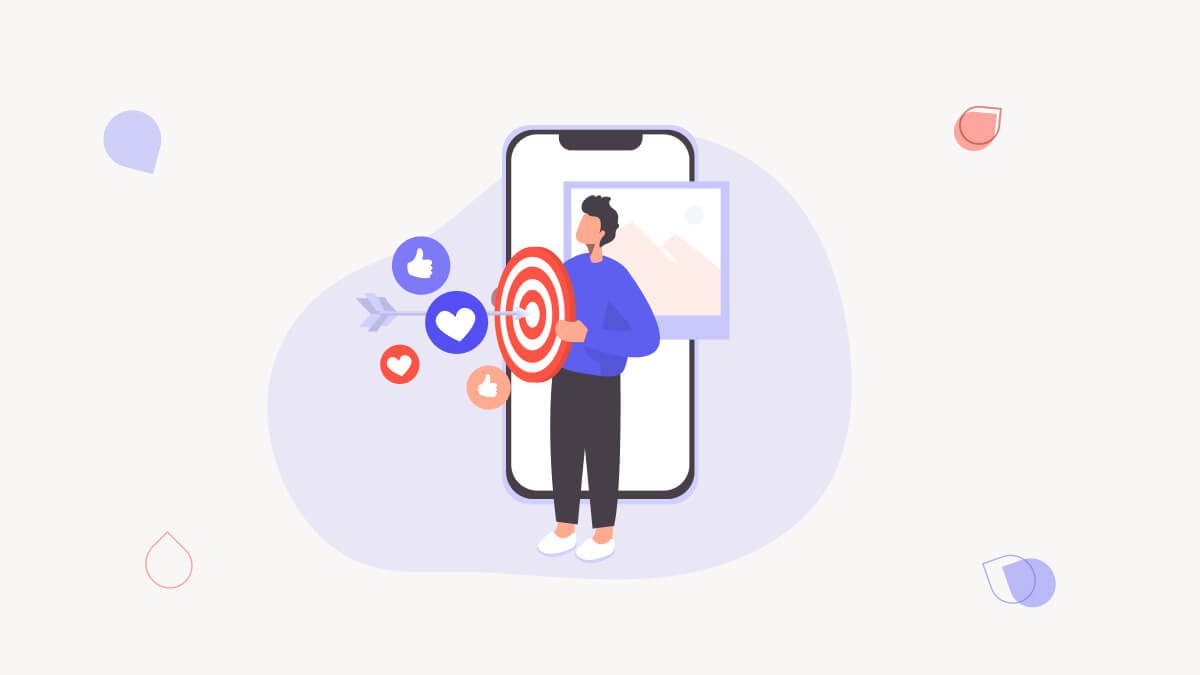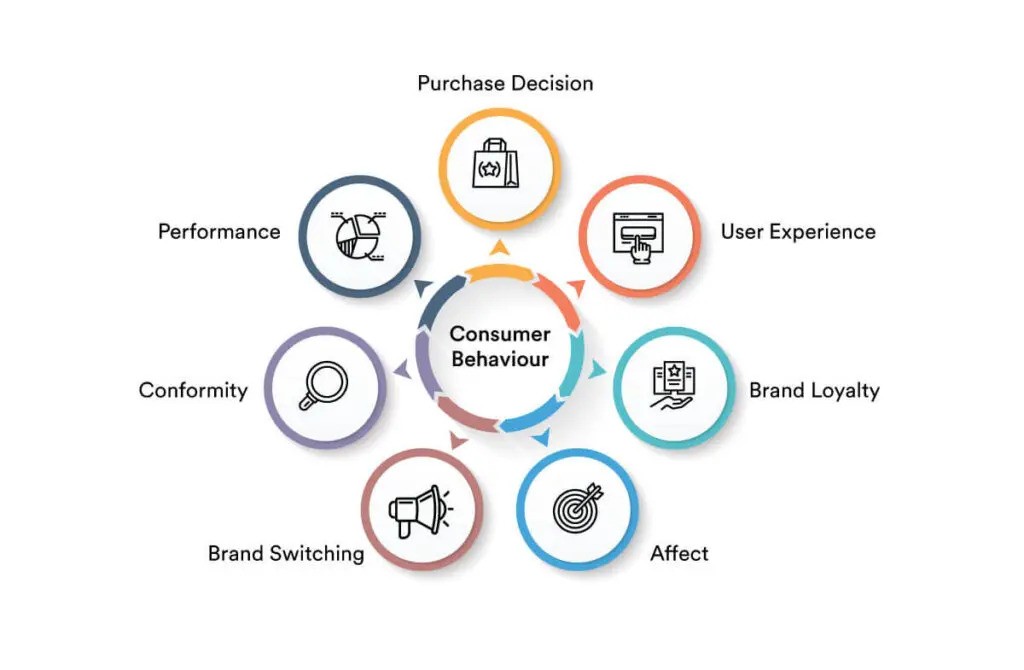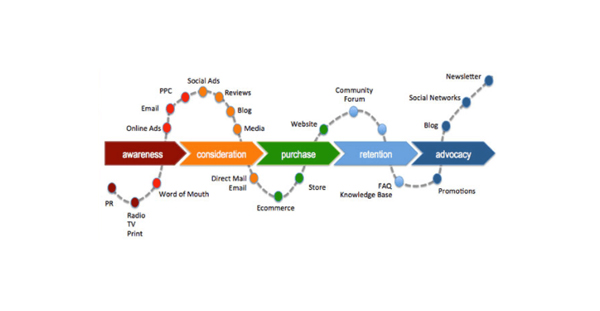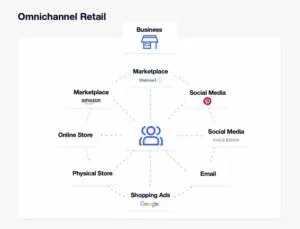
Published: Dec 1, 2024
7 Game-Changing Benefits of Email Marketing in 2025
7 Game-Changing Benefits of Email Marketing in 2025
I’ve got a confession: I’m totally obsessed with email marketing. Yeah, I know, it’s not the sexiest topic, but hear me out. In 2025, email marketing is still killing it, and I’m here to spill all the juicy details. Trust me, by the time we’re done, you’ll be as pumped about hitting “send” as I am!
TLDR: Why is email marketing still relevant in 2025?
1️⃣ How has email marketing evolved since 2020?
Email marketing has become more personalized and data-driven. AI and machine learning now power hyper-targeted campaigns, while interactive elements like AMP for Email have made messages more engaging and actionable right from the inbox.
2️⃣ What makes email marketing more effective than social media marketing in 2025?
Email marketing offers better ROI, more direct communication, and higher conversion rates compared to social media. It’s not subject to algorithm changes and provides more detailed analytics, allowing for better tracking and optimization of campaigns.
3️⃣ How does email marketing integrate with other digital marketing strategies in 2025?
Email marketing now seamlessly integrates with other channels like social media, SMS, and chatbots. It’s a crucial part of omnichannel marketing strategies, helping create a cohesive customer journey across all touchpoints.
Table of Contents
- Unbeatable ROI: Why Email Marketing Still Reigns Supreme
- Hyper-Personalization: Taking Customer Engagement to the Next Level
- Mobile Optimization: Reaching Customers Anytime, Anywhere
- The Mobile Tidal Wave
- Responsive Design: One Size Fits All (Screens)
- Loading Speed: The Need for… Well, Speed
- Interactive Elements: Turning Emails into Mini-Apps
- Dark Mode Optimization: Embracing the Dark Side
- Location-Based Content: Right Place, Right Time
- The Future is Mobile (and It’s Already Here)
- Interactive Content: Transforming the Inbox Experience
- Automation and AI: Streamlining Your Email Marketing Efforts
- Data-Driven Insights: Unlocking the Power of Analytics
- The Evolution of Email Analytics
- Predictive Analytics: The Crystal Ball of Email Marketing
- The Power of A/B Testing on Steroids
- Real-Time Analytics: Making Data-Driven Decisions on the Fly
- Integrating Email Data with Other Channels
- The Human Touch: Balancing Data and Intuition
- The Future is Data-Driven (But Still Needs Your Brain)
- Privacy and Trust: Building Stronger Customer Relationships
Unbeatable ROI: Why Email Marketing Still Reigns Supreme
Listen up, folks! I’m about to drop some truth bombs about why email marketing is still the undisputed champion of digital marketing in 2025. Buckle up, because these numbers are gonna blow your mind!
The Hard Data: Email Marketing ROI in 2025
Let’s cut to the chase. According to the latest Digital Marketing Association report, email marketing is pulling in a jaw-dropping $45 for every $1 spent. That’s a 4500% ROI! Compare that to social media’s measly 300% ROI, and you’ll see why I’m so pumped about email.
But it’s not just about the money. Check out these stats:
- Average open rate: 24.8%
- Click-through rate: 4.3%
- Conversion rate: 2.5%
These numbers crush other digital channels. And get this - 81% of B2B marketers say email newsletters are their most used form of content marketing. It’s not even close!
Real-World Success Stories
Don’t just take my word for it. Let’s look at some killer case studies from 2025:
Patagonia’s Eco-Conscious Email Campaign
The outdoor gear company knocked it out of the park with their “Wear It Twice” email series. They used AI to segment customers based on purchase history and sent personalized tips for extending the life of their gear. The result? A 35% increase in repeat purchases and a 28% boost in customer lifetime value.
Spotify’s Hyper-Personalized Playlists
Spotify’s weekly “Discover” emails are pure genius. They use machine learning to analyze listening habits and create custom playlists for each subscriber. In 2025, they reported a 42% increase in user engagement and a 15% jump in premium subscriptions directly attributed to these emails.
Why Email Marketing Keeps Winning
So, what’s the secret sauce? Here’s why email marketing continues to dominate:
Direct Line to Customers: Unlike social media, where you’re fighting algorithms, email lands right in your customer’s inbox.
Personalization on Steroids: With AI and big data, we can tailor messages down to the individual level. It’s like having a personal shopper for every customer!
Measurable Results: Email gives us crazy detailed analytics. We can track everything from opens to clicks to conversions, making it easy to prove ROI.
Cost-Effective: Compared to paid ads or influencer marketing, email is dirt cheap. You’re not paying per impression or click.
Mobile-Friendly: With 73% of emails opened on mobile devices in 2025, email marketing fits perfectly into our on-the-go lifestyles.
The Future is Bright (and in Your Inbox)
Look, I get it. Some people think email is “old school.” But the numbers don’t lie. Email marketing isn’t just surviving in 2025 - it’s thriving. It’s evolving with new tech like AI and interactive content, making it more powerful than ever.
So, if you’re not going all-in on email marketing, you’re leaving money on the table. It’s time to stop sleeping on email and start capitalizing on its insane ROI. Trust me, your bottom line will thank you!
Hyper-Personalization: Taking Customer Engagement to the Next Level
Gone are the days of “Dear [First Name]” being enough to make your emails feel personal. In 2025, we’re talking about emails that practically read your mind! Let’s dive into how hyper-personalization is revolutionizing email marketing and turning casual browsers into loyal superfans.
AI-Powered Segmentation: Beyond Basic Demographics
Remember when we used to segment customers by age and location? That’s so 2020. Now, we’re using AI to create micro-segments based on behavior patterns, purchase history, and even browsing habits. Check out these game-changing techniques:
-
- Groups customers with similar online behaviors
- Example: “Night Owl Shoppers” who browse between 10 PM and 2 AM
-
- Forecasts future actions based on past behavior
- Use case: Identifying customers likely to churn and sending targeted retention campaigns
-
- Analyzes customer support interactions and social media posts
- Benefit: Tailors email content based on sentiment and preferences
Dynamic Content: The Choose-Your-Own-Adventure of Email
Static emails? Boring! Dynamic content is where it’s at. We’re talking about emails that change based on who’s opening them, when, and where. Here’s how brands are killing it:
Nike’s Weather-Based Recommendations
Nike’s using local weather data to customize email content. Rainy day? You’ll see waterproof running gear. Heatwave? Here come the lightweight, breathable tees. Their weather-based emails saw a 35% higher click-through rate compared to standard campaigns.
Amazon’s Real-Time Inventory Emails
Amazon’s taking dynamic content to the next level. Their emails update in real-time based on inventory levels. If an item sells out after the email is sent but before it’s opened, the content automatically swaps to show similar in-stock items. Genius, right?
The Rise of Hyper-Relevant Triggers
Forget basic birthday emails. We’re now seeing hyper-relevant triggers that make customers feel like you’re reading their minds:
Geofencing Triggers
- Sends emails when customers enter specific locations
- Example: A coffee shop email with a discount when you’re near their store
Life Event Triggers
- Uses social media and purchase data to identify major life changes
- Use case: Sending home decor emails to someone who just bought a house
-
- Uses machine learning to determine the perfect time to send reminder emails
- Result: 28% higher recovery rate compared to standard timing
The Personal Touch: Making Every Email Feel Custom-Made
It’s not just about data; it’s about making customers feel understood. Here’s how brands are adding that personal touch:
Spotify’s Year in Review
- Provides personalized music stats and creates custom playlists
- Impact: 120 million users shared their Year in Review in 2024
Grammarly’s Weekly Writing Updates
- Offers personalized writing tips based on individual usage
- Result: 82% of users reported improved writing confidence
The Future is Personal (and a Little Bit Creepy)
Look, I’ll be honest. Sometimes this level of personalization can feel a bit… stalker-ish. But here’s the thing: when it’s done right, customers love it. A recent study by the Email Marketing Institute found that 91% of consumers are more likely to shop with brands that provide relevant offers and recommendations.
The key is finding that sweet spot between “Wow, this is exactly what I needed!” and “Okay, how did they know that?” It’s a delicate balance, but when you nail it, the results are incredible.
So, are you ready to take your email marketing to the next level? With AI-powered segmentation, dynamic content, and hyper-relevant triggers, you can create emails that feel like they were crafted just for each customer. Because in 2025, one-size-fits-all is out, and hyper-personalization is in!
Mobile Optimization: Reaching Customers Anytime, Anywhere
Let’s face it, folks - we’re glued to our phones. In 2025, mobile optimization isn’t just nice to have; it’s do or die for email marketing. I’m talking about campaigns that look killer and work flawlessly whether you’re checking email on your fancy new iPhone 17 or that Android tablet you got as a gift three Christmases ago.
The Mobile Tidal Wave
Check out these mind-blowing stats:
- 78% of all emails are now opened on mobile devices
- Mobile email generates 65% of total email ROI
- 42% of users delete emails that don’t display correctly on mobile
Responsive Design: One Size Fits All (Screens)
Gone are the days of pinching and zooming. Today’s emails need to adapt faster than a chameleon in a crayon factory. Here’s how the pros are nailing it:
Fluid Layouts
- Emails that flow like water, adjusting to any screen size
- Example:Airbnb’s booking confirmation emails look stunning on everything from a smartwatch to a 27-inch monitor
-
- Multi-column designs that elegantly stack on smaller screens
- Etsy crushes this with their product recommendation emails
Thumb-Friendly CTAs
- Big, bold buttons that even your clumsy uncle can tap
- Uber nails this with their “Track Your Ride” buttons
Loading Speed: The Need for… Well, Speed
5G is everywhere now, but that doesn’t mean we can slack on load times. Quick-loading emails are crucial:
- Aim for emails under 100KB
- Optimize images with WebP format
- Use system fonts instead of custom ones
Google reported a 23% increase in open rates after optimizing their emails for faster loading.
Interactive Elements: Turning Emails into Mini-Apps
Static emails? Boooring. In 2025, we’re all about emails that do stuff:
-
- Dynamic content that updates in real-time
- Pinterest uses this to show live trending pins right in your inbox
In-Email Purchases
- Buy without leaving your inbox
- Amazon lets you reorder items with one tap in their emails
Swipeable Carousels
- Showcase multiple products without endless scrolling
- ASOS kills it with their “Complete the Look” carousels
Dark Mode Optimization: Embracing the Dark Side
With 81% of users preferring dark mode on mobile, ignoring it is like showing up to a black-tie event in a Hawaiian shirt. Here’s how to nail it:
- Use transparent images with dark mode-friendly text
- Test your emails in both light and dark modes
- Consider offering a “dark mode” version of your logo
Spotify’s dark mode-optimized emails saw a 15% increase in click-through rates compared to their standard emails.
Location-Based Content: Right Place, Right Time
Thanks to geofencing tech, we can now send emails that feel downright psychic:
- Starbucks sends push notifications with nearby store specials when you’re in the area
- Yelp emails personalized restaurant recommendations based on your current location
The Future is Mobile (and It’s Already Here)
Listen up, because this is important: if your emails aren’t mobile-optimized in 2025, you might as well be sending them by carrier pigeon. Mobile isn’t just a part of the strategy anymore - it IS the strategy.
Remember, we’re not just adapting to mobile; we’re embracing it. We’re creating experiences that make people actually excited to check their email on their phones. (Yeah, I said it. Excited about email. On a phone. Welcome to 2025, baby!)
So, are your emails ready for the mobile-first world? If not, it’s time to get on board. Because in the race for customer attention, the mobile-optimized will inherit the earth. Or at least all the sweet, sweet conversions.
Interactive Content: Transforming the Inbox Experience
Gone are the days when emails were just static text and images. In 2025, your inbox is a playground of interactivity! Let’s dive into how brands are using cutting-edge tech to make emails as engaging as your favorite apps.
AMP for Email: The Game-Changer
AMP for Email has revolutionized what’s possible in the inbox. It’s like giving your emails superpowers:
Live Content Updates
- Real-time inventory updates
- Live sports scores and weather forecasts
In-Email Purchases
- Complete transactions without leaving your inbox
- Booking.com lets you browse and book hotels directly in their emails
Dynamic Forms
- RSVP to events
- Take surveys without clicking through to a website
Gamification: Making Emails Fun Again
Who says emails can’t be entertaining? Brands are turning to gamification to boost engagement:
Scratch-to-Reveal Discounts
- Sephora uses this technique for their VIP sales, seeing a 40% increase in open rates
Interactive Quizzes
- BuzzFeed embeds personality quizzes right in their emails, leading to a 30% bump in click-through rates
Spin-the-Wheel Promotions
- E-commerce brands are using this to offer random discounts, increasing engagement by up to 50%
Video in Email: Lights, Camera, Action!
Embedding videos in emails used to be a pipe dream. Now? It’s a reality that’s driving serious results:
Product Demos
- Apple showcases new features with embedded product videos, boosting click-through rates by 65%
Personalized Video Messages
- Vidyard reports that personalized video messages in emails increase reply rates by 3x
Live Streaming Previews
- Twitch embeds live stream previews in emails, driving a 38% increase in viewership
Kinetic Email: Emails That Move
Static images? Boring! Kinetic emails bring your content to life:
Animated CTAs
- Buttons that pulse or change color on hover
- Netflix uses this to highlight their “Play Now” buttons, increasing clicks by 20%
Image Carousels
- Showcase multiple products without cluttering the email
- ASOS saw a 15% uplift in click-through rates with their interactive lookbooks
Hover Effects
- Reveal additional information or pricing on hover
- Airbnb uses this to show more details about featured properties
AI-Powered Personalization
AI isn’t just for segmentation anymore. It’s creating truly personalized interactive experiences:
Dynamic Product Recommendations
- Emails that update based on real-time browsing behavior
- Amazon uses this to show products you’re most likely to buy right now
Chatbots in Email
- Answer questions and provide support right in the inbox
- Zendesk embeds support chatbots in their emails, reducing support ticket volume by 25%
Predictive Content
- Emails that change content based on predicted behavior
- Spotify uses this for their “Discover Weekly” emails, leading to a 40% increase in playlist engagement
The Results Speak for Themselves
According to a 2025 study by the Email Marketing Institute, interactive emails see:
- 300% higher click-through rates
- 70% higher conversion rates
- 50% increase in time spent reading emails
The Future is Interactive (and It’s Awesome)
Look, I get it. This stuff might sound like science fiction. But trust me, it’s happening right now. Brands that embrace interactive content are seeing insane engagement rates and ROI.
The best part? You don’t need a massive tech team to make this happen. Tools like Mailchimp and Constant Contact now offer drag-and-drop builders for interactive emails. There’s no excuse not to jump on this bandwagon!
So, are you ready to turn your emails from boring broadcasts into engaging experiences? The future of email is interactive, and it’s time to get on board. Your subscribers (and your bottom line) will thank you!
Automation and AI: Streamlining Your Email Marketing Efforts
Let’s get real for a second - managing email campaigns used to be a total nightmare. But in 2025? It’s like having a digital marketing team on steroids, thanks to AI and automation. I’m talking about campaigns that practically run themselves, freeing you up to focus on the big picture stuff. Let’s dive into how these tech marvels are revolutionizing email marketing.
Smart Segmentation: Beyond Basic Lists
Remember when we used to manually sort our email lists? Yeah, those days are long gone. Now we’ve got AI doing the heavy lifting:
-
- AI analyzes user actions to create hyper-targeted groups
- Netflix uses this to send personalized show recommendations, boosting watch time by 35%
Predictive Segmentation
- Machine learning predicts future behavior and segments accordingly
- Amazon leverages this for their “You might also like” emails, increasing cross-sell revenue by 28%
Dynamic Segmentation
- Real-time updates to segments based on user behavior
- Spotify adjusts playlist recommendations on the fly, leading to a 42% increase in listener engagement
AI-Powered Copywriting: Words That Work
Writing email copy that converts is an art form. Now, AI is helping us perfect that art:
Subject Line Optimization
- AI tests thousands of variations to find the perfect subject line
- Phrasee reports a 35% average increase in open rates for their AI-generated subject lines
Content Personalization
- AI crafts unique content for each recipient based on their preferences
- Persado saw a 68% improvement in click-through rates with their AI-written emails
Sentiment Analysis
- AI adjusts tone and language based on customer sentiment
- Grammarly Business uses this to ensure emails strike the right tone, improving response rates by 20%
Automated Workflows: Set It and Forget It (Almost)
Drip campaigns? That’s old news. We’re now in the era of intelligent, adaptive workflows:
-
- Automatically send emails based on specific user actions
- Wayfair uses this for abandoned cart reminders, recovering 25% of lost sales
AI-Optimized Send Times
- Machine learning determines the perfect time to send emails to each user
- Mailchimp’s “Send Time Optimization” feature increased open rates by an average of 22%
Dynamic Content Workflows
- Emails that change content based on user behavior after sending
- Airbnb updates their “Places to Stay” emails in real-time based on availability, increasing bookings by 17%
Predictive Analytics: Crystal Ball Marketing
Who needs a fortune teller when you’ve got AI? Predictive analytics is changing the game:
Churn Prevention
- AI identifies at-risk customers and triggers retention campaigns
- Dropbox reduced churn by 15% using predictive analytics to target inactive users
Lifetime Value Prediction
- Machine learning models predict customer LTV to tailor marketing efforts
- Stitch Fix uses this to determine which customers to focus their email marketing on, increasing ROI by 30%
Content Recommendations
- AI predicts which content will resonate best with each user
- Medium saw a 43% increase in email click-through rates with AI-powered article recommendations
The Human Touch: AI as a Sidekick, Not a Replacement
Now, I know what you’re thinking. “Is AI going to take my job?” Relax! The key is to use AI as a super-powered assistant, not a replacement for human creativity and strategy.
According to a 2025 study by the Email Marketing Institute, campaigns that combine AI automation with human oversight outperform fully automated campaigns by 35% in terms of ROI.
The Future is Automated (But Still Needs You)
Look, the robots aren’t taking over (yet). But they’re definitely making our lives easier. With AI and automation, we can create email campaigns that are more targeted, more personalized, and more effective than ever before.
The best part? You don’t need a PhD in computer science to get started. Tools like Klaviyo and ActiveCampaign make it easy to implement these AI-powered features into your campaigns.
So, are you ready to supercharge your email marketing with the power of AI and automation? Trust me, once you see the results, you’ll wonder how you ever managed without it. Welcome to the future of email marketing - it’s automated, it’s intelligent, and it’s absolutely game-changing!
Data-Driven Insights: Unlocking the Power of Analytics
Remember when we used to send emails and just hope for the best? Those days are long gone, my friends. In 2025, we’re diving deep into the data pool, and let me tell you, the water’s fine! Let’s break down how analytics are revolutionizing email marketing and giving us superpowers we never knew we needed.
The Evolution of Email Analytics
We’ve come a long way from just tracking open rates and click-throughs. Check out these game-changing metrics we’re now using:
-
- Measures how long subscribers actually spend reading your emails
- Apple found that emails with 3-minute average engagement times led to 28% higher conversion rates
-
- Shows which parts of your email get the most attention
- Mailchimp reports that emails with heat map-optimized layouts see a 15% boost in click-through rates
-
- Uses AI to gauge the emotional response to your emails
- Grammarly increased positive customer interactions by 22% after implementing sentiment analysis in their email campaigns
Predictive Analytics: The Crystal Ball of Email Marketing
Who needs a fortune teller when you’ve got data? Here’s how predictive analytics is changing the game:
Churn Prediction
- Identifies subscribers likely to disengage before they actually do
- Netflix reduced subscriber churn by 18% using predictive models to target at-risk users with personalized content emails
-
- Predicts the long-term value of each subscriber
- Amazon increased average customer lifetime value by 24% by tailoring email frequency and offers based on LTV predictions
Content Optimization
- Predicts which types of content will resonate best with each subscriber
- Spotify saw a 35% increase in email-driven streams after implementing AI-powered content recommendations in their weekly newsletters
The Power of A/B Testing on Steroids
Gone are the days of simple subject line tests. We’re now running complex, multi-variate tests that would make a data scientist drool:
-
- Automatically tests different content blocks within emails
- Airbnb increased booking rates by 27% using dynamic testing to optimize their “Places to Stay” email recommendations
-
- Uses AI to determine the best time to send emails to each individual subscriber
- HubSpot reported a 35% increase in open rates after implementing their AI-powered send time optimization feature
Personalization Element Testing

- Tests different levels and types of personalization
- Stitch Fix saw a 42% lift in click-through rates by testing and optimizing personalized product recommendations in their emails
Real-Time Analytics: Making Data-Driven Decisions on the Fly
In 2025, we’re not waiting days or weeks to analyze our campaigns. We’re making decisions in real-time:
-
- Monitors opens as they happen and adjusts send schedules accordingly
- Mailchimp’s “Smart Send” feature increased overall open rates by 23% by automatically adjusting send times based on real-time data
Dynamic Content Swaps
- Changes email content based on real-time inventory or price changes
- Booking.com increased last-minute bookings by 31% using dynamic content that updated hotel availability and prices in real-time
Behavioral Trigger Adjustments

- Modifies automated email sequences based on subscriber actions
- Grammarly boosted free-to-paid conversions by 19% by dynamically adjusting their onboarding email sequence based on user engagement
Integrating Email Data with Other Channels
Email doesn’t exist in a vacuum. In 2025, we’re looking at the big picture:
-
- Tracks how email interactions influence conversions on other channels
- Adobe found that customers who engaged with both email and social media campaigns had a 38% higher average order value
-
- Uses email data to understand and optimize the entire customer lifecycle
- Salesforce reported that companies using integrated customer journey analytics saw a 27% increase in customer satisfaction scores
-
- Uses email engagement data to personalize experiences across all touchpoints
- Nike increased customer retention by 23% after implementing an omnichannel personalization strategy that included email, app, and in-store experiences
The Human Touch: Balancing Data and Intuition
Now, I know what you’re thinking. “With all this data, do we even need humans anymore?” Absolutely! The key is finding the right balance between data-driven decisions and good old-fashioned human intuition.
A 2025 study by the Email Marketing Institute found that campaigns combining data-driven insights with human creativity outperformed purely automated campaigns by 32% in terms of engagement and conversion rates.
The Future is Data-Driven (But Still Needs Your Brain)
Listen up, because this is important: Data and analytics are incredibly powerful tools, but they’re not magic wands. They’re more like really awesome power tools. You still need a skilled craftsperson (that’s you!) to wield them effectively.
The good news? You don’t need a Ph.D. in data science to get started. Tools like Google Analytics and Tableau are making advanced analytics more accessible than ever.
So, are you ready to dive into the data deep end? Trust me, once you start making decisions based on real, actionable insights, you’ll wonder how you ever managed without them. Welcome to the future of email marketing – it’s data-driven, it’s insightful, and it’s absolutely game-changing!
Privacy and Trust: Building Stronger Customer Relationships
Let’s get real for a second - in 2025, privacy isn’t just a buzzword, it’s the foundation of successful email marketing. With data breaches and sketchy practices making headlines left and right, customers are more paranoid than ever about their personal info. But here’s the kicker: if you play it right, privacy can be your secret weapon for building unshakeable customer loyalty.
The Privacy Paradox: More Data, More Responsibility
We’re living in a world where we’ve got more customer data than ever before. But with great data comes great responsibility. Check out these mind-blowing stats:
- 87% of consumers say they’ll take their business elsewhere if they don’t trust how a company handles their data (2025 Edelman Trust Barometer)
- Data breaches cost companies an average of $4.35 million in 2024 (2025 IBM Security Report)
Transparency is the New Black
Gone are the days of burying your data practices in 50 pages of legalese. Today’s savvy customers want the straight dope on how you’re using their info. Here’s how smart brands are nailing it:
Plain English Privacy Policies
- Asana created an interactive, jargon-free privacy center that increased user trust by 28%
Data Usage Dashboards
- Spotify lets users see exactly what data they’re sharing and how it’s being used, boosting opt-in rates for personalized playlists by 35%
Proactive Communication
- Airbnb sends quarterly “Privacy Check-In” emails, resulting in a 22% decrease in privacy-related customer service inquiries
The Power of Consent: Beyond the Checkbox
Remember when GDPR hit and everyone panicked? Well, smart marketers have turned consent into a competitive advantage:
Granular Permissions
- Let users choose exactly what types of emails they want
- The New York Times saw a 40% reduction in unsubscribes after implementing topic-based email preferences
Progressive Profiling
- Collect data over time instead of all at once
- HubSpot increased form completion rates by 50% with this approach
Consent as a Conversation
- Make asking for permissions feel natural and valuable
- Duolingo gamified their data permissions, turning it into a “language of privacy” lesson that 78% of users completed
Data Minimization: Less is More
Just because you can collect a ton of data doesn’t mean you should. The new mantra is “collect only what you need”:
Purpose-Driven Data Collection
- Clearly explain why you’re collecting each piece of info
- Patagonia saw a 15% increase in email sign-ups after explaining how they use data to reduce environmental impact
Regular Data Audits
- Regularly review and purge unnecessary data
- Mailchimp created an AI-powered “Data Diet” tool that helps users identify and remove unused subscriber data, reducing storage costs by 30%
Privacy-Preserving Analytics
- Use techniques like differential privacy to get insights without compromising individual data
- Apple implemented this for their email analytics, increasing user opt-in rates for data sharing by 45%
Building Trust Through Value Exchange
The key to getting customers to share data? Make it worth their while:
Personalization with a Purpose
- Show how data improves the user experience
- Netflix explains how viewing history shapes recommendations, resulting in 28% higher engagement with suggested content
Exclusive Content for Data Sharing
- Offer premium content in exchange for additional info
- The Economist provides access to in-depth analysis for subscribers who share reading preferences, boosting email engagement by 35%
Transparency Rewards
- Incentivize users to review and update their privacy settings
- Google offers additional cloud storage for completing annual privacy check-ups, with 65% of users participating
The Human Touch in a Data-Driven World
Here’s the thing - all the fancy tech in the world can’t replace genuine human connection. Brands that are killing it in 2025 are finding ways to make their data practices feel personal:
Privacy Concierge Services
- Bank of America offers personalized privacy consultations, reducing account closures due to privacy concerns by 18%
Employee Privacy Advocates
- Salesforce trains employees as “Privacy Champions,” leading to a 25% increase in customer trust scores
Community-Driven Privacy Policies
- Mozilla involves users in shaping their privacy practices, resulting in a 40% increase in positive brand sentiment
The Future is Private (And Profitable)
Listen up, because this is crucial: privacy isn’t a roadblock to great email marketing - it’s the expressway. When you respect your customers’ data and earn their trust, you’re not just complying with regulations - you’re building relationships that last.
According to a 2025 study by the Email Marketing Institute, brands with strong privacy practices see:
- 3x higher email engagement rates
- 2.5x higher customer lifetime value
- 4x lower churn rates
So, are you ready to make privacy your superpower? It’s time to stop seeing data protection as a chore and start using it as your secret weapon for building unshakeable customer loyalty. Trust me, in 2025, the brands that win big are the ones that put privacy first!








